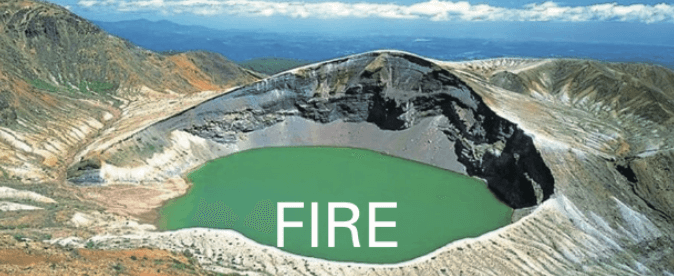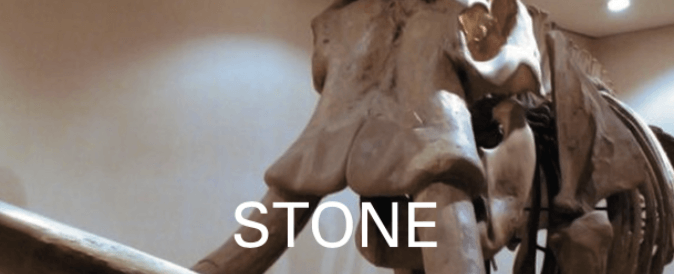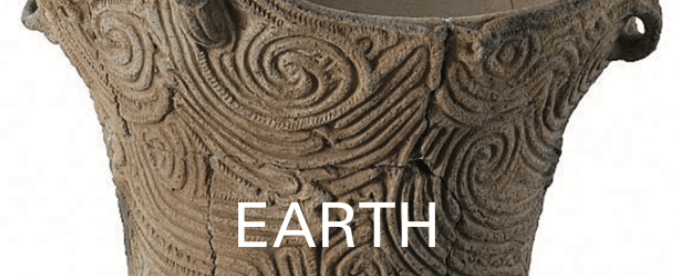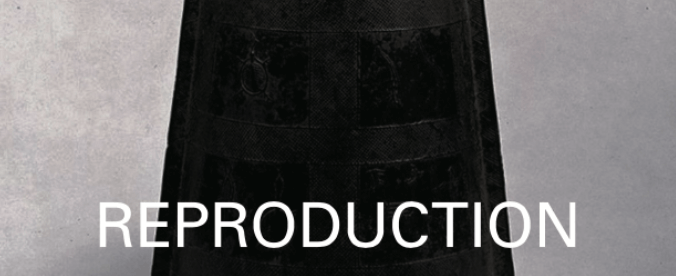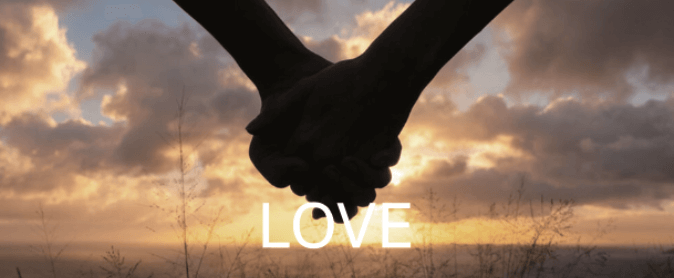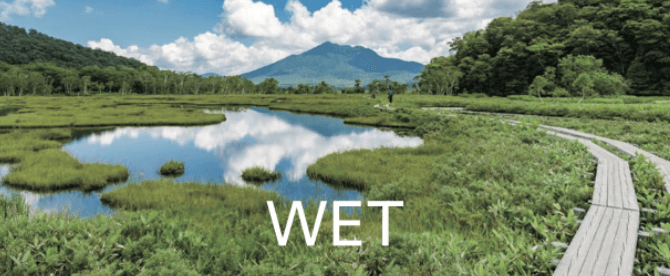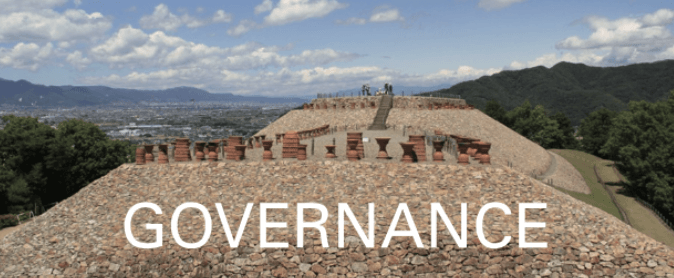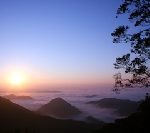
The Oeyama mountain range (Height 833m) runs along the base of the Tango Peninsula. A sea of clouds over the mountain range is famous, which is created with moisture and radiative cooling that enter from the Sea of Japan in spring and autumn.
The Oeyama mountain range also has the legend of Shuten-doji (ogre). Shuten-doji had the pale red face, the short and disordered red hair, the hands and feet like the limbs of a bear, who lived in a palace like Ryugu (dragon palace), and had many subordinate demons.
In the vicinity of the Oeyama mountain range, there was a village with a civilization of steelmaking technology: Tatara – an iron manufacturing method to use iron sand, that actually enshrined the mountain god.
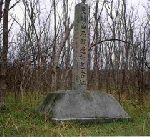
Kumihamacho town was the center of Kumi-sho, village, which was the manor of Choko-do Temple, in the Rokujo no miya Palace of Cloistered Emperor Go-Shirakawa (1127 – 1192).
The village flourished, which was described in “Ie gohyaku ken mune, – 500 houses and residence”, at Odankacho, of Tango Province, A notebook that Onshi in Ise, the priest who encouraged a pilgrimage to Ise, described their supporters in Tango Province. The site of Hoishihama beach shows the origin of its growth.
A Kasen copper coin from the Xin Dynasty (8 – 23AD), ruins of manufacturing ornamental bead, and copper iron products were excavated. In ancient times, Hakoishi Harbor was an important trading port.
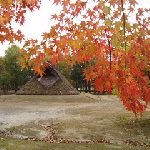
“A settlement compound spanning over 4,000 years” -This site is a great compound of settlements from the Jomon period, 5,000 years ago, to the Kamakura period, 13th-14th Century. This area of Shiso City is an ideal location for commuting from west to east, through the sea road of Setouchi, and from north to south, through the road of Tatara, an ancient iron manufacturing region.
The Shishiwa City History Museum in this park, introduces the history of the area, centering on the Ebara site, which is surrounded by the clear stream of the Ibo River and the rich forests, and was a Shogun demesne in the Edo period (1603 – 1868).

“Worshiping the Great Land Master in the ancient Harima region” -This shrine enshrines the Great God, Iwa no Ookami, as the god of nation-building and development farming, in the Harima region. Around the 2nd Century BC, bronze and iron ware were introduced to Japan. At that time, Wet-Rice farming expanded to Western Japan and created agricultural industrialization under the Great Land Master.
The Harimanokuni Fudoki, a description of regional climate, culture, and others in the Harima Province, said that Iwa no Ookami from Izumo Province was Onamuchi no kami. Onamuchi no kami developed the country, encouraged industry to open the way to stabilize lives, and established the regulation of medicine and taught the skill of cures, which created a nation. He was worshiped as the founder of Harima Province.
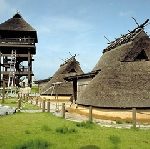
Makibanda ruins are located at the hill overlooking the Japan Sea, and at the foot of Mt. Daisen (height 1,729m), the highest mountain in the Chugoku region. The ruins were the Kokuyu, domain of the Yayoi period (4th century BC – 3rd century). There was a major community of the domain that reached the peak of power, during the Civil war of Wa, ancient Japan, which was registered in the first History of Japan, Gishiwajinden, an Account of the Wa, the history of the Wei Dynasty 3rd century.
The ruins tell us the existence of a powerful king, like the northern wall, a 2km long folding screen type rocks of Daisen.
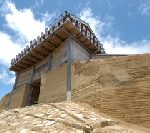
An ancient Korean-style mountain castle located at Mt. Kijozan (397m) was one of the castles built by the Imperial Court for the defense of Kinai, five lands area near the Imperial Court, after the defeat in the Battle of Hakusukinoe, the Paekche restoration war, in 663. This castle has water gates with the drainage function at the important point of the castle walls.
The ancient Kibi country had been controlled by the prince of Baekje, Ura until the dispatch by the Imperial court of Kibitsuhiko no mikoto, legendary Japanese, the son of Emperor Korei. This was the oldest site of iron manufacture in Japan, at the east foot of this castle site. Kibi no tsu, used to be islands, before land reclamation by drainage and pile.
The face of Oni, the devil became red by the fire of iron manufacture.
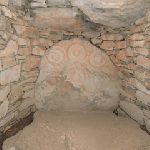
This burial mound is located in the eastern part of the Wakamiya Hachimangu shrine. It is a keyhole tomb considered to be the tomb of the chief in the first half of the 6th century. Various patterns were drawn on the entire wall of the Tunnel Tomb-type stone chamber in the circle of the keyhole tomb. Swords, shields, ships, fish, and beasts were also drawn, in the centering concentric circles and bracken patterns.
Image quality and expressiveness are different from Takamatsuzuka Tumulus and Kitora Tumulus in Asuka Nara from the end of the 7th century to the beginning of the 8th century.
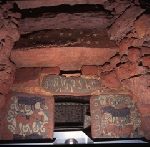
Fukuoka Keisen Town is located at the southern end of the Chikuho area. Around this area, stoneware that is considered to be from the 10th century BC to the 4th century BC has been excavated. These ancient tombs were built in the 6th century and is a National Historic site.
The biggest attraction of this tomb is the murals in the stone chamber with colorful decorations and patterns. The color shining in the dark shows a presence that is different in image quality and expressiveness from Takamatsuzuka Tumulus in Asuka Nara.

Chibusan Tumulus, in the Higo Ancient Forest of the Yamaga district, is a 6th century keyhole tomb, 44m long and 7m high. On the surface of the stone coffin, people, circles and triangles were drawn in three colors, red, white and black which were made of Aso soil pigment.
The museum has a detailed replica of the tumulus which is irregularly-opened to the public and can be viewed at any time. The original movie, and other displays, introduce us to the Decorated Tumulus before Asuka Decorated Tumulus in the 7th century.

Under the theme of “Kumamoto’s memory for the future”, this museum exhibits about 4100 items from ancient times to the present. This museum is an Integrated Museum of Nature, Humanity, and a planetarium.
In the Kofun period, Kumamoto, was called Hinokuni, the Volcano Province. The plating mirror and the harness on horses of an important cultural property from the Tumulus period (the 3rd– 7th century) are exhibited.
These were excavated from Saien Tumuluses, in Asagiri Town, Kuma district. This museum also introduces white porcelain excavated from the site of Rengeji Temple, from the Kamakura period (1185 – 1333) of the Medieval Ages as well as the relics excavated from the sites in Kumamoto Prefecture.
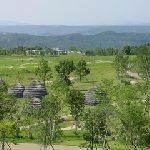
“The Pit dwelling houses for settlement, came!” -This site is located in the plateau of Uenohara and started in the early Jomon period, 7,500 years ago. This was the full-scale settlement of Jomon people. It had pit dwelling houses and open space for festivals. You can see here the movement of the settlement to this plateau by 2,500 years ago.
This site has settlements from the Jomon period (16,000 years ago – 3,000 years ago) that dates as far back as the Sannai Maruyama site in Aomori prefecture. In this site, there is a 7,500 year old open space for ceremonies, 3,500 year old hunting grounds, and 2,500 year old cooking facilities. At the archeological preservation museum that keeps the temperature and humidity in the designated historic site, you can observe the remains of the 9,500-year-old pit dwelling, as well as excavated stones and earth pits.
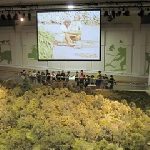
“Here, you will know the start of the Jomon period.” -This museum, located in Jiganji Park, guides well the ruins in Kagoshima city, and the relics of stone implements and unglazed earthenware that was excavated there, since the Paleolithic Age and the start of the Jomon period (16,000 years ago – 3,000 years ago). You can simulate the excavation and touch the relics, too.
This museum introduces the Sojiyama site, from the beginning of the Jomon period, with one of the largest models in our country. It is one of the oldest settlements in Japan, along with the Kusano Shell Mound and its excavated relics from the later Jomon period.
This museum also introduces, via a large video screen, the history of Kumaso, a tribe living in the ancient southern Kyushu Island that did NOT serve the Yamato Court, and Hayato, a tribe living in the ancient southern Kyushu Island that DID serve the Yamato Court. Both lived in South Kyushu with their own culture.
